

• This Single Half Hull Represents Four Sister Ships Launched 1923-25.
• Ship's Model Half Hull Size: lenght:65", deck:5 1/4", bow:10", stern:8".
• Backboard Mount Size: original pine mount, l: 70" x w: 11 3/4" x d: 3/4".
• Half Hull Constuction Material: Made from laminated clear pine
• Age of Model : constructed in 1922, similar style to one we sold last year.
• Name of This Ship: The 'Dalrymple', launched April, 1923
• Wall Mountings : Five wall mount points at 16" centres with covers.
• Documented Fact: Only one half-hull was ever produced for the Canadian 'Laker' Dalrymple and her three subsequent sister ships.
Collingwood Shipyards1922 Half Hull
A Note of Interest: Half hull scale models are indeed rare and they are one of the last tangible vestiges of the ship building era in Collingwood, Ontario, in addition to being an important cultural and historical part of Canada's ship building legacy from the early 20th century. These vintage half hulls are sometimes said to be as rare as "hen's teeth".
They are found in only a few publicly funded museums and in very low numbers at that, plus some are held in a few private collections. The Collingwood museum is believed to have the largest single collection of half hulls as they possess five or possibly six in their permanent collection.
In fact, our in-depth research tells us that there are probably only a maximum number of about thirty of these half hull scale models that were ever produced at the Collingwood shipyard between the years of 1902 up until the second World War. The future owner of this historically important rare specimen can indeed feel proud to possess one of these half hull scale models from an era long gone, and one that will never be repeated.


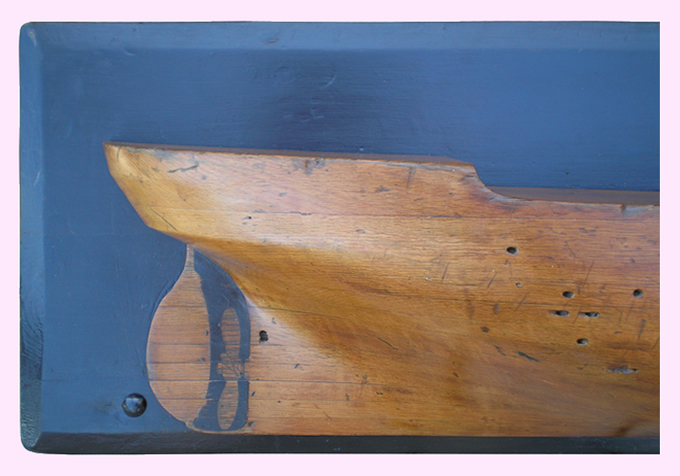
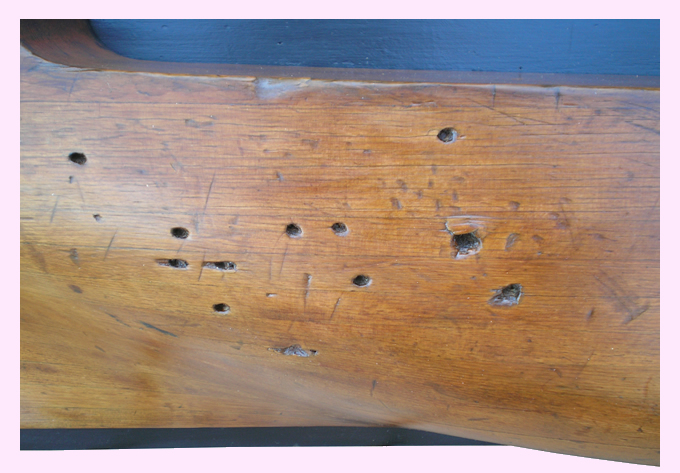
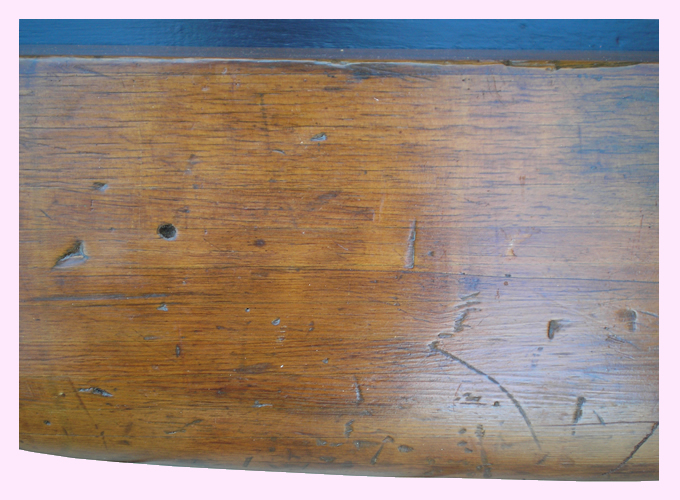
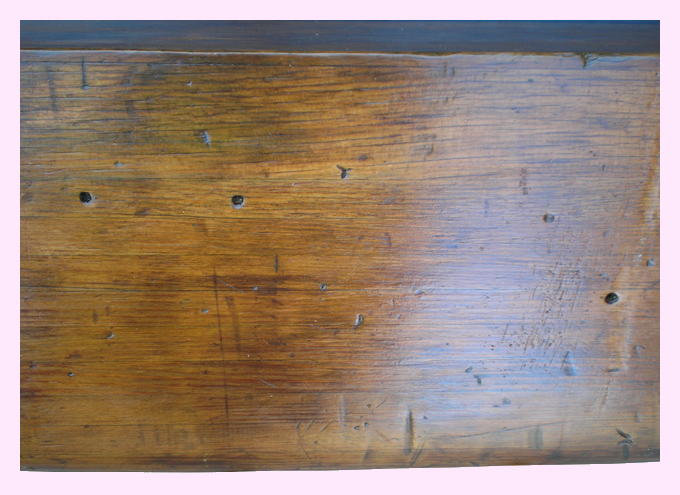
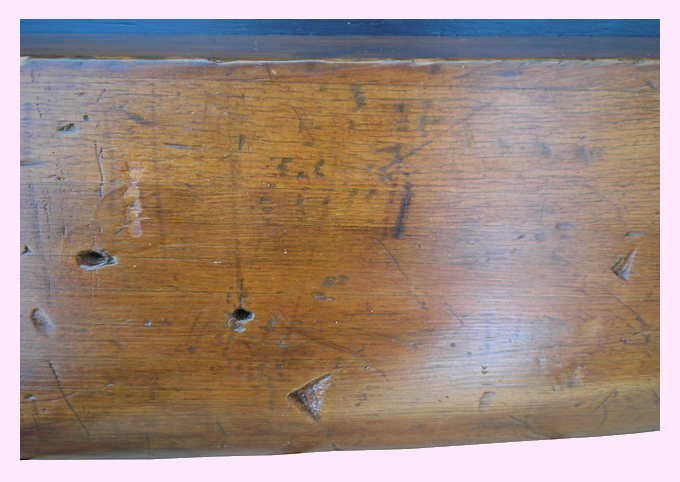
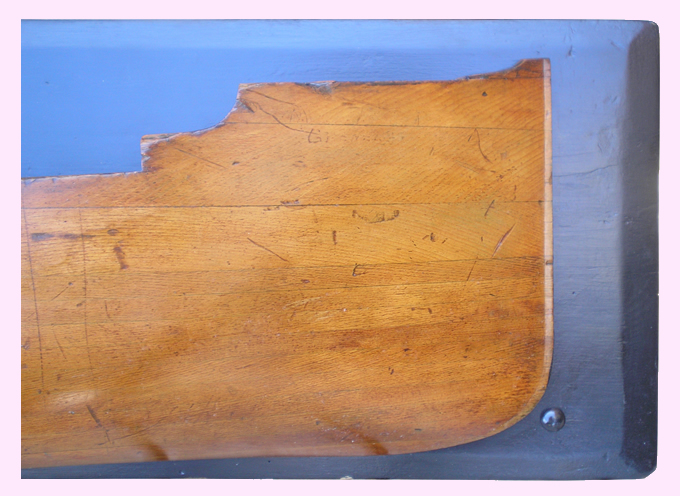



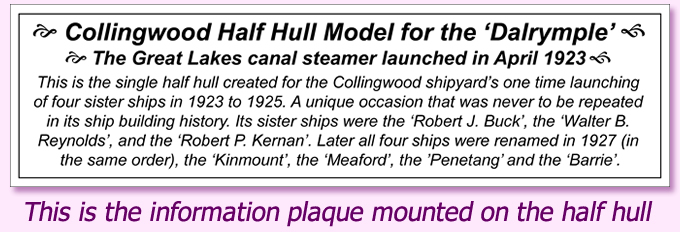
![]()
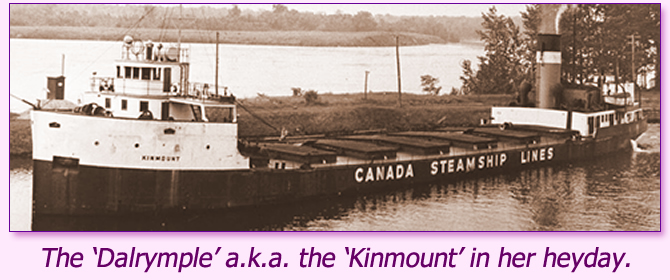
![]()
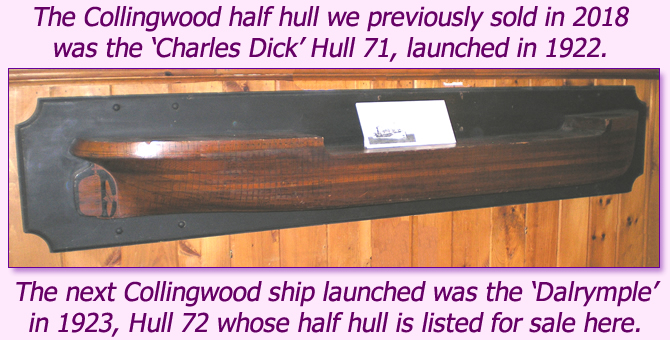
![]()

This half hull scale model, when discovered, was without any written documentation other than the fact that it was indeed known to be from the Collingwood shipyards. So the process of researching all of the facts concerning this model and the ship it represented had to take place before the actual name of this steamer ship could be uncovered.
The key to discovering the history of this 1920's lake-freighter or "lakers" as they are known, was to be found in the model itself. This half hull, and others like it, was created as an actual scale model, and that was the ultimate key to unfolding the historical background of this ship. By measuring the model's scale, meaning it's length, width and depth, you could then do a ratio comparison with the documented information on all of the ships that Collingwood Shipbuilding had launched in its history.
Thankfully, there does exist a complete documented data record of all of the ships that were produced and launched at the Collingwood shipyards, from 1902 until 1986, with a combined total of ninety commercial ships. There were a number of government military ships launched during the war years and at other times, but that information would have been classified and it was not listed among the records in the data base that we researched. Among these records are listed the exact lengths and widths of all of these ships along with other pertinent information, such as their launch dates, launch names, the owners, ship type and even the years they were later scraped. So now, the study could begin and that information is detailed in the comparative analysis listed in the six points below.
1. To start, we had to narrow down the year span during which this half hull and it's ship were produced. Those would be the years between 1902 and 1945, after which, all half hull scale model production had ceased. Though we believe that half hull scale model production had actually stopped before the second World War.
2. This list was then narrowed down further as to the type of commercial ship being researched. The half hull in question is known as a 'laker' or 'steamer', as opposed to other varieties of ships produced by this shipyard, such as 'motor vessels' or 'barges'. Motor vessel production only began in 1944, so we eliminated these ships for the following reasons, size, date and type of ship. Barges were eliminated for reasons of size alone.
3. A close analysis and comparison of this half hull's dimensions was juxtaposed with the records for the 'steamer' ships produced during our 'target' years, 1902 to 1945, of which there were exactly twenty-eight steamers launched.
4. After the next round of measurement comparisons we narrowed down the list of verifiable targeted ships in the correct length size range, to twelve ships in total, these were all steamers and all were launched within the target years.
5. Next, six of these ships were then excluded from the search due to varying discrepancies in their length ratio in comparison to our half hull scale model. This meant that the list was now narrowed down to six possible ships that could be the the exact ship related to our scale model.
6. In further measurement calculations, two additional ships were excluded from the list, once again due to discrepancies in their lengths. So, in the final analysis only four ships in total matched all of the ratio measurements exactly, down to the last foot in length and width.
This brought us down to the final conclusions to be made. While further investigating the remaining facts relating to the four ships in question, as to which one could be the correct ship represented by this half hull model, we came upon a somewhat surprising revelation and concluded that possibly even Canadian ship historians may be unaware of.
![]()
Firstly, the four ships that match the specs and proportions of our half hull model were all built and launched within three years of each other at the Collingwood shipyards between 1923 and 1925.
Secondly, each and everyone of these ships were steamers and were, in comparison, exact in dimension, down to the last foot, compared to our half hull scale model.
Lastly, we were brought to the final realization that all four of these steamers were 'sister ships', build to the exact same specifications and launched within the years 1923 to 1925.
The Collingwood shipyard, over its eighty plus years in operation, built twenty-eight ships in total that were directly or eventually purchased by the Canada Steamship Lines. But it was only the four ships referred to here, luanched within these two years, that were exact copies of each other, down to the last foot. We also discovered that the building of these four identical ships was also an uncommon occurrence within the Collingwood shipyard's lifespan. The construction and launch of four 'sister ships' at the Collingwood shipyard was a once-in-a-lifetime event within its shipbuilding history that was never again to be repeated.
So, the only reasonable and absolutely 'spot-on' conclusion that can be made in this circumstance is that, the half hull scale model for sale here represents not just the one ship in a series of four produced over a two year period, but it represents all four steamer ships built between 1923 and 1925. It becomes obvious that there was no need to produce additional half hull scale models for each of these same proportioned ships over this close span of time, as the Collingwood shipyard actually produced four copies of this ship for two different clients. The first ship of this group, known as Hull 72, was built for the Main Transit Company and launched in April, 1923. The next three ships, known as Hull 74, Hull 75 and Hull 76, were built for the Geo. Hall Coal Shipping Co. and were launched in May, June and July of 1925.
All of these ships were identical in plans so if any changes were necessary they would have simply shown up in the other ship's blueprints, so again, there would be no need for additional half hull models beyond the first one already built.
When the first steamer, originally built for the Main Transit Co, was launched in 1923 it was given the name, the 'Dalrymple', just as all of the three other ships were given separate names. The next three ships were built for the George Hall Coal Shipping Co. in 1925. But, as circumstances change, in 1926 the Canada Streamhip Lines purchased this fleet of all four identical ships. Our research discovered, that the names of all four of these ships were later changed in 1927 after the completion of the purchase by Canada Steamship Lines and the name changes are listed here below.
The first ship, launched as the 'Dalrymple' was changed to the 'Kinmount' in 1927.
The second, launched as the 'Robert J. Buck' was changed to the 'Meaford' in 1927.
The third, launched as 'Walter B. Reynolds' was changed to the 'Penetang' in 1927.
The forth, launched as 'Robtert P. Kernan' was changed to the 'Barrie' in 1927.
It should be noted that all four ships, after many years of service, were scraped in 1959 and 1960 in Hamilton Ontario and were recycled in the steel mills there. Sad to say that all that remains now of these four ships is their noted database documentation and the half hull dislayed here.
We believe that the title that should accompany the half hull scale model displayed here will be the 'Dalrymple'. As the 'Dalrymple' was the first of this group of 'sister ships' that was launched after this half hull was produced. But, for posterity sake, this half hull has a direct associated link with the three other original launch names of it's 'sister ships' listed above, and they too are part of the history of this vintage half hull scale model.
The half hull ship's model listed for sale here is indeed a very rare specimen and according to its history it holds a special place among its fellow 'half hulls' that were produced at the Collingwood shipyards in its eighty plus year working lifespan. It is the only half hull produced there that represents not just one ship, but also its three other sister ships in total. This can't be said for any other ship or half-hull model ever fabricated at the Collingwood shipyard during its working lifetime.
Listed below are related links at GreatLakesVesselHistory.com for these four ships
Hull 72 the 'Dalrymple' launched April 1923: renamed the 'Kinmount'
Hull 74 the 'Robert J. Buck' launched May 1925: renamed the 'Meaford'
Hull 75 the 'Walter B. Reynolds' launched June 1925: renamed the 'Penetang'
Hull 76 the 'Robtert P. Kernan' launched July 1925: renamed the 'Barrie'
Click on the highlighted text here for the full story of the 1925 Collingwood shipyards sister ships, referred to in this article as the "Collingwood Triplets" as documented in 2008 in volume 40, #8 of the 'Scanner', the ongoing publication produced by the 'Maritime History of the Great Lakes'.
Copyright 2025 © FineArtandAntiques.ca

Though this may not be documented in any local Collingwood or surrounding area history books as far as we know, but, here's the story on how these and other Collingwood shipyards 'half hulls' were finally decommissioned and dispersed. This story about the half hulls was told to us by our friend Bill, a second generation shipyard worker who has since retired many years ago from the, now long closed, Collingwood Shipbuilding, as it was formally known, and from whom we had acquired the half hull shown just above that was sold in 2018.
The original story was relayed to Bill by his father, who was a department manager on one of the construction crew teams working on the floor of the Collingwood shipyard and who was also one of the fortuitous persons chosen to receive one of these half hull scale models. His father told him that not too long after the end of the second World War, the ship's engineering and design department were told by higher-ups that the half hulls, which had always been displayed on the walls of the Collingwood ship's engineers department drawing room for many years had to go, and that the time had come to dispose of the half hulls. They said, it had been decided, due to the fact that modernization was upon them and changes needed to be made, and that all of the half hulls had to be dispersed.
So on one particular day at the Collingwood shipyard offices, all the floor managers were individually called into the engineers drawing department, and the floor managers were told they could each choose a ship's half hull to take home with them as a remembrance of their loyal and long service to the company. So, one by one, each floor manager chose the model that they desired to have and though there were more half hull models than floor managers, they were told that the remainder of the ship's models were going out to some of the ship's investors and a few other noted individuals. So, at the end of the day, it was also the end of an era, and the production of half hull models was no longer going to be the common practice. In Collingwood, the masterful art of fabricating ship's half hull scale models had finally 'gone the way of the Dodo', never to be produced there again.
Copyright 2025 © FineArtandAntiques.ca

Have you ever wondered what a half hull model is, and why they were produced? You’ve probably seen them occasionally hanging on the wall of your favorite nautical antiques museum, specifically in our very own local Collingwood, Ontario museum, which I believe possesses at least five or six of these vintage nautical gems in their permanent collection. The half hull for sale here, being displayed on the page above, is a specimen designed and fabricated at the Collingwood shipyards from one hundred years ago, by its then resident shipwright model makers. In earlier days, a 'shipwright half hull model maker' was a unique trade that only few people ever belonged to and was usually only entered into from spending a number of years as a half hull model master's apprentice and not by merely taking a coarse in the local higher learning centre as you would today. In other words, it was a skill that had to be meticulously learned and absorbed through a number of years of attention to fine details from the master himself.
Half hull models were an important design and sales tool at a time when shipbuilders didn’t have CAD/CAM computers as they do today. There were only the dedicated and talented ships nautical engineers and model-makers to envision and design these ships on paper and who also created the half hull ship's models that today remain, the sole tangible legacies of this earlier period of Canada's ship building era. There was a time when boats were built without detailed drawings, or early on, even without any drawings at all. A hundred or more years ago these half hulls served as a shipwright’s sales tool and sometimes even the basis for building the ship itself. Designs were refined and passed on from shipbuilder to shipbuilder through the use of these earlier half hull models.
Half hull scale models were produced on the theory that ships were symmetrical in shape and form, at least most were, along their bow to stern center-line. So if you knew what one half of the ship looked like, the other half would be the same, except it would be a mirror image and there was no need to repeat the design by producing both sides of a ship in the working scale model.
The shipwright would sit down with the prospective ship's purchaser and present the half hull model so both could examine to see if the design was appropriate to the owner's needs and if any other changes were necessary. The model was a result of that shipbuilder’s cumulative experience of what the completed ship's hull would look like. Together, the ship building company and the owner-to-be would agree on the final details of the proposed ship through the use of this half hull model. In some cases, if needed, a new half hull model was created or additions and alterations made in order to reflect what the final design would be and what had been finally agreed upon.
Once the ship was completed, the half hull model was often fastened to a piece of flat planking and hung on the engineers office wall or occasionally presented to the ship's owner if he so desired. Earlier 18th and 19th century half hull models of clipper ship hulls are today also pretty rare, as the designing and building of these ships was a very competitive process. It's known that the best designers often burned their half hull models in their office stoves so they couldn’t be copied by other ship builders.
Nowadays, modern half hull models with highly refined gloss finishes are primarily made for decoration, and you too can have a custom half hull model made of your boat if you so desire. Often, they are quite expensive and constructed especially for proud ship owners who usually enjoy showing off their prize possession to fellow sailors... and when have you met a modern day sailor who didn't like to brag about his boat and his nautical adventures.
Today, as mentioned, half hulls can be expensive, as we've gleaned from discussions with two different naval architects and half hull makers who charge anywhere up to $15,000. for a top-end prime specimen of a half hull scale model. And, it can be especially expensive if the modern day 'line-plan' for your boat is not readily available to the public. Current day designers, especially those who design the most popular exotic powerboats and some sailing ships, are extremely reluctant to release those 'line-plans' to just anyone who asks. So, I guess you can say that not much has changed, just as in earlier 'Clipper Ship' days, boat designers today still fear their patterns could be stolen and tend to protectively hoard their designs from being re-purposed by some overzealous competitor.
So, forearmed with the knowledge of what an early 20th century half hull model represents, one should also be prepared to pay a handsome sum for one of these classic, museum quality, nautical gems from the past. For that reason, a half hull scale model, with a verifiable documented pedigree from the shipyard that produced it along with the knowledge of who the original owner was, such as the vintage specimen offered for sale here, can be quite rare and valuable indeed.
Copyright 2025 © FineArtandAntiques.ca
Rare Artifacts Ref No: 7TMA19RAV-S/NOEE
Collingwood Shipyards 1922 Half Hull Display Model
Updated March 9, 2025 |
|
|---|


